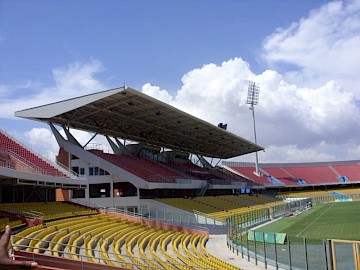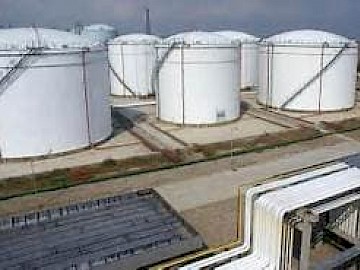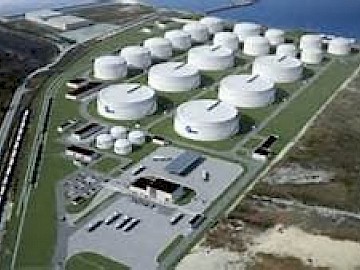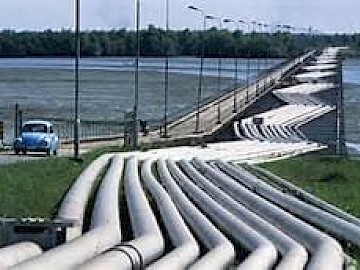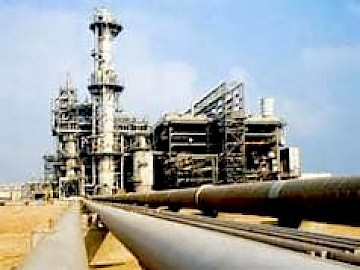
Zinga Systems
Extreme Environments Demand Superior Protection
The global impact of corrosion has reached beyond the trillion U.S dollar mark and efficient corrosion management is critical to maintain your assets. Adequate protection surpasses mere aesthetic needs as corrosion can cause structural instability to a catastrophic degree. Poorly maintained structures become a detriment to both health & safety as well as disrupting production processes and thus the profitability of your company.
ZINGA® differentiates from other anti-corrosion methods in combining both Passive and Active protection in an easily applied film galvanizing system that not only delivers active cathodic protection but also provides a passive physical shield.
ZINGA Galvanising supports excellent life cycle costing where the coating represents less than 20% of the project cost while over 80% is labour and equipment. It therefore makes sense to use the best coating system with the longest interval to first maintenance.
What is ZINGA?
ZINGA is a one component zinc rich coating or Film Galvanising System containing 96% zinc (dust) in its dry film. It is a metallic coating and not a paint. The purity of the zinc used, is so high that dry ZINGA does not contain any toxic elements.
ZINGA is a unique form of corrosion protection because it provides both Active and Passive protection in a form that’s as easy to apply as a paint.
ZINGA was originally invented at the University of Ghent (UGent), Belgium, in the 1970s and has since been used in a wide variety of projects throughout the world.
ZINGA is an active zinc performance coating which works in conjunction with the metal beneath, whereas paints are only passive barriers. Regardless of how thick paints are applied, they remain as barriers. Once they are breached, corrosion sets in immediately. Despite this significant difference ZINGA is still often mistaken for a paint simply because it’s liquid and comes in a tin. But there are other more subtle differences. For example it does not “skin over” in the tin because ZINGA has an unlimited pot-life and it doesn’t go “tacky” like a paint.
How Does It Work?
When two different metals come in contact with each other in presence of an electrolyte (e.g. water), they form a galvanic cell in which the lesser noble metal (e.g. Zn) corrodes in favour of the more noble metal (e.g. steel). This electrochemical reaction is the base for the complex field that is cathodic protection.
Galvanic, cathodic protection, or active protection, arises from zinc (the anode) sacrificing itself in favour of the base metal -steel (the cathode) with the resulting flow of electrons preventing steel corrosion. In this way the protection of the metal is guaranteed, even when the zinc layer is slightly damaged.
Other well-established methods of cathodic protection include hot-dip galvanising (HDG) and zinc thermal spraying, both of which exhibit a constant sacrificial rate of the zinc layer.
With ZINGA the sacrificial rate reduces dramatically after the zinc layer has oxidised and the natural porosity has been filled with zinc salts. Additionally the zinc particles within the ZINGA layer are protected by the organic binder without adversely affecting the electrical conductivity. This enables ZINGA to create nearly the same galvanic potential between the zinc and the steel as hot dip galvanising but with a lower rate of zinc loss because, put simply, the binder acts as a “corrosion inhibitor” to the zinc.
How Can It Be Used?
ZINGA provides comparable protection to conventional galvanising without the need for topcoats. Although ZINGA is only available in grey (the natural colour of zinc), the significant advantage of this form of application is that the ZINGA layer can be re-coated at any point in the future with the bare minimum of preparation and without compromising the integrity of the coating (see Re-charging of ZINGA). ZINGA on its own is often used, because the structure is already on site or too big for the molten zinc baths. Additionally ZINGA is commonly specified on delicate structures (wrought iron gates, sculptures) or when architectural demands require a higher standard of surface finish (no need to drill to de-gas, fettle).
For optimal protection, ZINGA should be applied in two layers of 60 or 90 µm DFT each.
Application
Once thoroughly mixed, ZINGA® can be applied by using a normal paintbrush, a short-fibre roller (not for the first coat) or a conventional or airless spray-gun. When applying ZINGA®, it must only be thinned with Zingasolv, which is available from CIC Ltd. Please read the appropriate Data Sheet.
ZINGA® can be applied in a wide variety of weather conditions. The application surface temperature range is from -15°C to +40°C, with a maximum humidity of 95% so long as the steel temperature is 3°C above dew point. Like all coatings the substrate surface should be free from all types of contamination.
The broad range of allowable application conditions that ZINGA® affords means that very few days are lost during projects due to poor weather i.e. the maintenance window is extended. This, combined with ZINGA®‘s unlimited shelf life, ensures minimal wastage of either time or materials Working under ambient temperatures, ensures no deformation of the steel structure (which can happen in the hot dip galvanization process) or energy loss.
© 2024 Carafra Industrial Composites Ltd | Privacy Policy | Site Map

